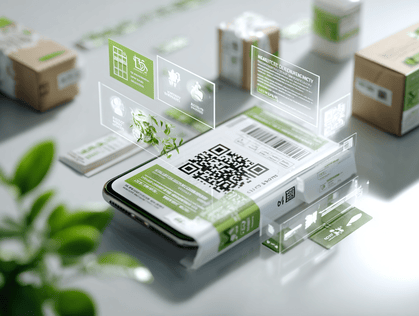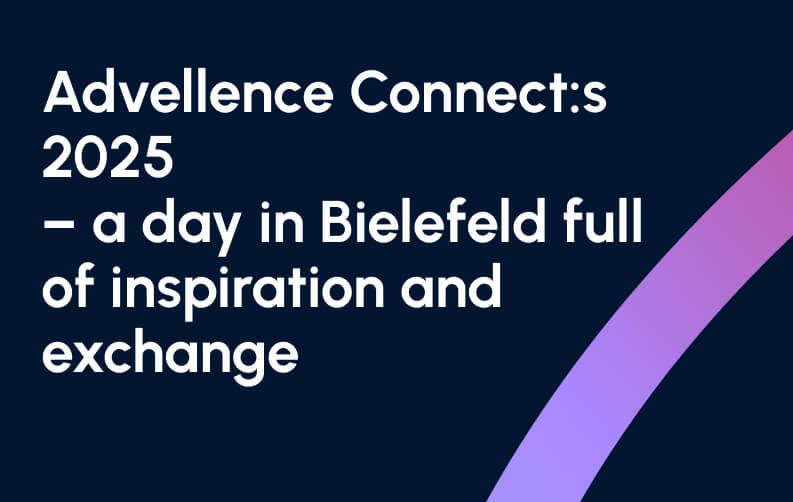September 29, 2022
The Return on Investment of Master Data Management
Reliable data forms the basis for successful and sustainable business – and Master Data Management (MDM) is the technology that generates this data and makes it centrally accessible. With the help of MDM, companies can use MDM to realize a whole range of advantages that make it easier to argue with decision makers in the company.

Reliable data forms the basis for successful and sustainable business – and master Data Management (MDM) is the technology that generates this data and makes it centrally accessible. With the help of MDM, companies can use MDM to realize a whole range of advantages that make it easier to argue with decision makers in the company. However, a pure advantage argument is not enough – in this article, we explain how to properly approach an MDM project right from the start.
Create Awareness
First of all, it is important to know which data is actually business-critical, where it is managed in the company and by whom it is used for what purpose. In this context, the processes relating to the procurement, creation, enrichment and provision of data should also be analysed. There is also no generally valid blueprint here, as companies often differ greatly in their challenges. For example, suppliers and retailers generally have different requirements for their data processes. However, there are a few typical questions that help to clearly outline the initial situation:
- What types of data are core elements of our most important business processes? Is it information about our products, customers, suppliers, locations and/or others?
- How is this data generated and how does it get into our systems?
- Which systems does the data pass through during core processes?
- Who is involved in the processes and what are the tasks, responsibilities and challenges of those involved?
- Are there regulatory regulations or laws that must be taken into account when implementing the processes?
- What are the known inefficiencies?
Asking these and similar questions creates a common awareness among the initiators – an important first step towards representing the MDM business case together before management.
Put Facts on the Table
Once the business case has been roughly outlined, the next step is to work out the factors that determine the ROI of the project. The ROI is measured on the one hand on the savings and on the other hand on the additional turnover generated by the MDM can be generated. Possible cost savings include, for example, better-negotiated supplier agreements, a lower number of returns due to better product communication, and process improvements in data onboarding or marketing. On the sales side, a faster go-to-market, greater campaign success due to personalized customer communication and a higher repurchase rate thanks to the better customer experience can be achieved. In addition, MDM technologies have integrated analytics and reporting functions that provide valuable insights and thus enable continuous optimization.
The Business Case is Ready – and Now?
When choosing the right technology, there are a few things to consider. Finally, MDM is intended to introduce a central system spanning many different business processes. This also makes MDM an important project strategically, which is why not only the functional level alone should be evaluated, but also a number of strategic areas. For example, it can play a role in the selection which integration partners a provider has – on the one hand, the geographical proximity to the company is often important here and, of course, the experience and competencies of the partners in question are also important.
But it is also worth taking a closer look in the area of technology strategy. Even if a company does not currently see a use case for the use of AI or analytics, these aspects could play an important role in the future. Relevant providers should therefore always be selected based on opportunities to meet future requirements. Even when it comes to the question of the type of installation, long-term planning should be made – on-premise solutions only make sense today in very specific cases; most business cases benefit significantly from software-as-a-service models.
In addition, companies must think about how they want to implement MDM into their infrastructure – the concept depends on the business focus and complexity of the company. The differences lie in particular in who is the leading system for updating the data – existing data sources or the MDM. Against this background, it can be an advantageous scenario for companies with a complex system landscape if MDM simply pulls data from the source systems in order to provide a clean data truth. No data is sent back to the systems and the source systems remain responsible for quality assurance themselves. As a result, there is no massive interference with the company's system landscape; the MDM integration itself can be carried out comparatively quickly and cost-effectively. In contrast, there is a centralized approach in which MDM is implemented as the leading system. It determines the quality of the affected data across all systems and thus leads to a secure and very high level of data quality in all processes and applications. Changes to the data are made in MDM and are immediately available in the other systems. The advantage of this procedure is therefore, in particular, that the data is always accurate, correct and complete and that control is carried out by a single central system.
Since MDM is a long-term digitization program, there is often an evolution in companies that involves switching from the first to the second approach at some point. That's important to understand – MDM isn't implemented and is then “done,” it grows with companies and their requirements.
Strategic Advisory & Effective Execution
We continuously innovate to transform data into competitive advantage via expert advisory, effective project execution, and precision engineering.
Our Blog for Experts.
We use our expertise in various disciplines to turn data into sustainable competitive advantages for our customers and to share our knowledge.
Further News
All the latest news about Advellence
Do you have
Questions?
Make an appointment for a non-binding and free consultation right away!







